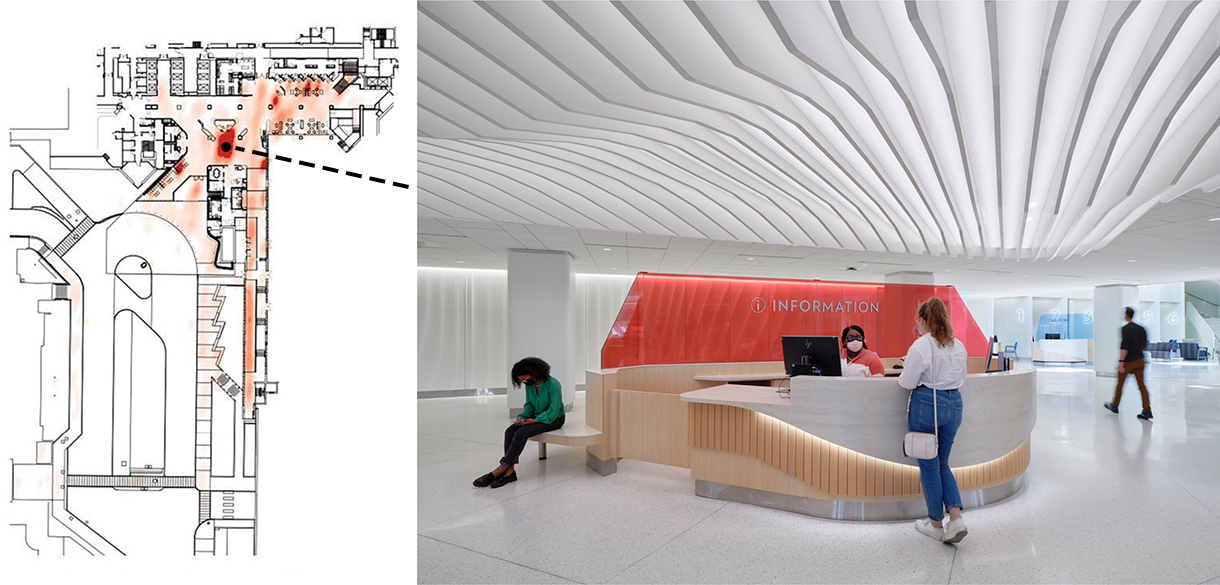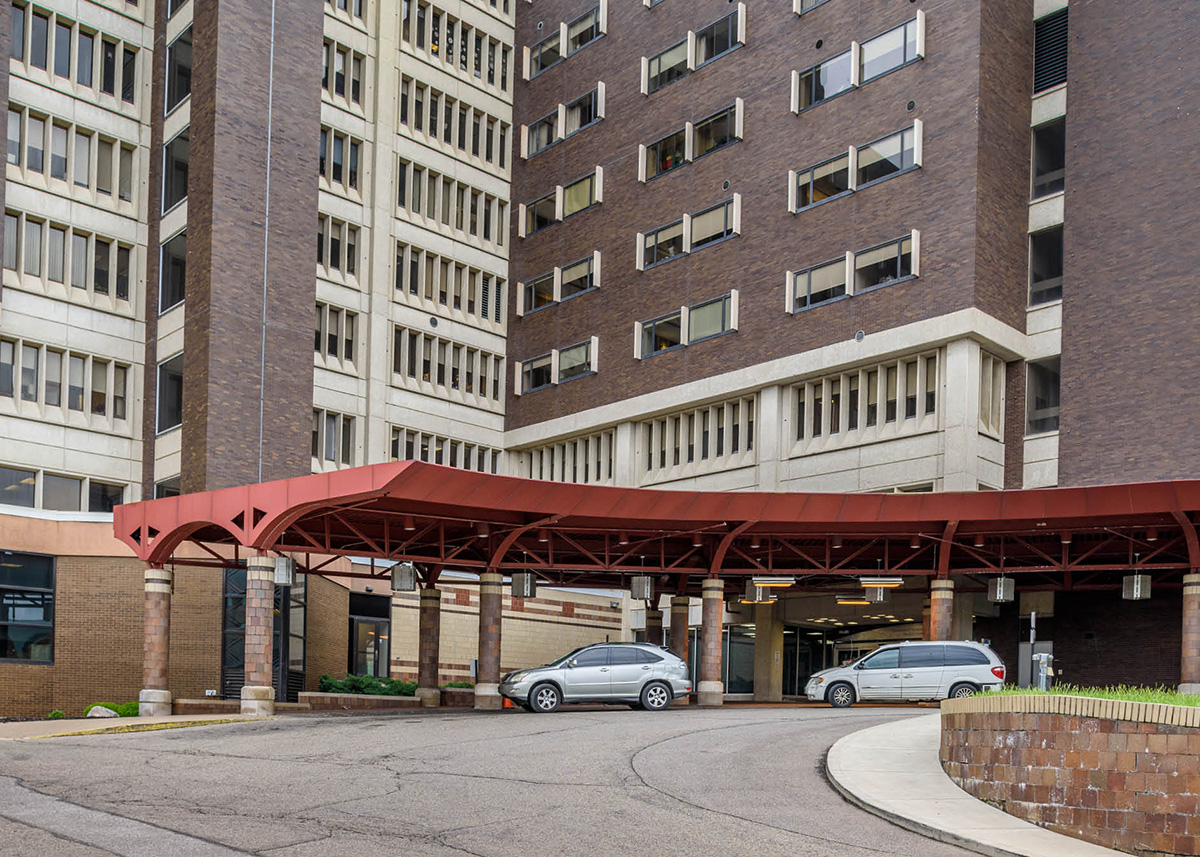From the Outside, In: Navigating Medical Campuses
←
To Project Types
| by Shan Jiang, Ph.D. | Kirsten Miller, AIA EDAC | Zahra Daneshvar, EDAC | Jackson Feinknopf |
What it is:
A recent Post Occupancy Evaluation (POE) at UC Health Medical Center analyzed the sequence of arrival experiences through foot traffic or driving within a medical campus. This new study filled a research gap by recognizing the importance of transition from outdoor to indoor spaces in the hospital arrival zone. The POE was conducted at UC Health Medical Center after our renovations to their main arrival were complete. The study was done in partnership with academic researchers from the University of Kansas and the School of Planning and Architecture at the University of Mysore, India and with support from UC Health Medical Center.
The study used Space Syntax Analysis—a set of techniques for analyzing the spatial configurations of buildings and urban areas to understand how those configurations influence social interactions and human behavior—as well as behavior mapping to analyze both pedestrian and vehicle traffic in the hospital’s arrival zone.
 Above: POE observations of interactions at the new information desk reveal that 30% of people who visited the desk were given verbal wayfinding guidance by staff. The average resolution time of these interactions was less than 30 seconds each.
Above: POE observations of interactions at the new information desk reveal that 30% of people who visited the desk were given verbal wayfinding guidance by staff. The average resolution time of these interactions was less than 30 seconds each.
Why is it important?
Patient experience is a foundational principle in healthcare facility design. Arrival, orientation, and ease of navigation influence patients’ perceptions during the initial moments of their care journey. Research has shown that when it comes to navigating healthcare spaces, difficulties are often pervasive, beginning outside the building with the search for the correct parking areas and continuing through to the search for the correct room.
Use the slider to compare the arrival zone before renovation and after. The new entry canopy clearly conveys where to go.
When patients and visitors can easily navigate a hospital—starting at their arrival on site—they are less likely to need guidance from staff. Wayfinding ease can also help lower anxiety as people make their way to their destinations.

This research was published in HERD: Health Environments Research & Design Journal
For the full research paper, contact GBBN’s Director of Research, Shan Jiang
Additional research support provided by the collaborative team of: Hui Cai, Ph.D., Professor and Executive Director at Georgia Institute of Technology; Monalipa Dash, Ph.D., Associate Professor, School of Planning and Architecture, University of Mysore, India; Doug Chamber, AVP Facilities, UC Medical Center; Jon Hornung, Sr. Project Manager, Design & Construction Department, UC Health





